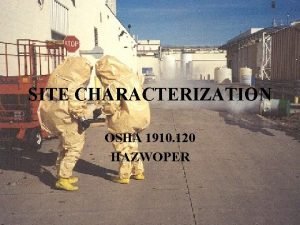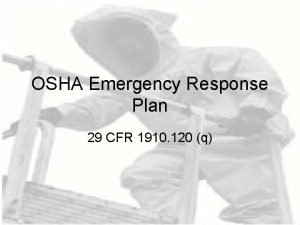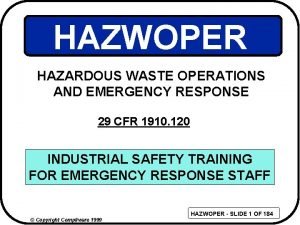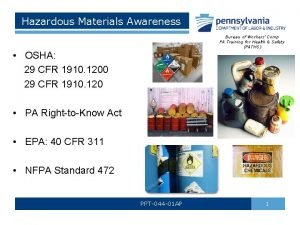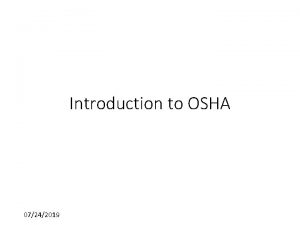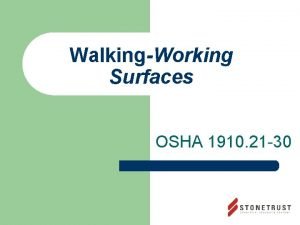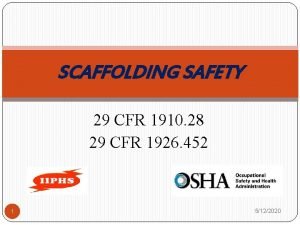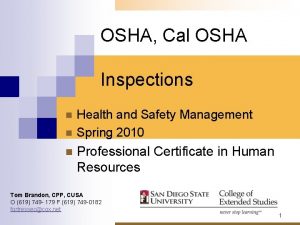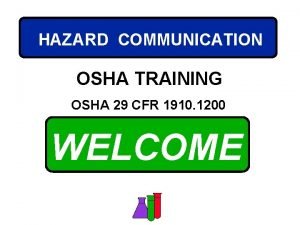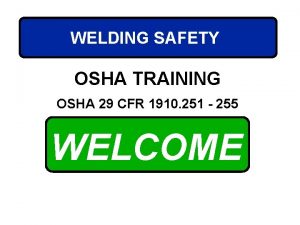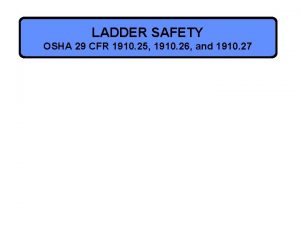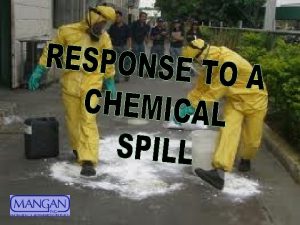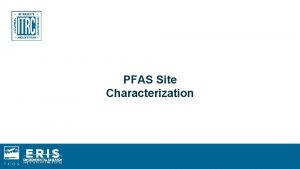SITE CHARACTERIZATION OSHA 1910 120 HAZWOPER PURPOSE PROVIDES









- Slides: 9

SITE CHARACTERIZATION OSHA 1910. 120 HAZWOPER

PURPOSE: PROVIDES THE INFORMATION NECESSARY TO IDENTIFY SITE HAZARDS AND TO SELECT WORKER PROTECTION METHODS. GOAL: OBTAIN ACCURATE, DETAILED, AND COMPREHENSIVE INFORMATION TO TAILOR THE PROTECTIVE MEASURES TO THE ACTUAL POTENTIAL HAZARDS AT THE SITE.

RESPONSIBILITIES • Incident Commander, Supervisor, Project Manager, with support from: – Chemist – Industrial Hygienists – Geologists – Safety Personnel – Toxicologists

Three Phases of Site Characterization • Offsite characterization prior to site entry. • Onsite Survey • Ongoing Characterization

GOAL • Gather as much information as possible so hazards are evaluated and preliminary site controls and personal protection measure are established: – Focus on potential inhalation hazards, IDLH situations or other dangerous situations such as: • Explosive/Flammable Situations • Extremely Hazardous Situations • Dead animals, Dead Vegetation, Discolored Soils

Two Methods To Obtain Information • Interviews/Records Review • Perimeter Reconnaissance

ONSITE SURVEY • Look, feel, listen, smell. • Use BUDDY system. • Note types of containers, impoundment or storage systems. • Note Condition of Containers. • Note Physical Condition of the Materials. • Identify Natural Wind Barriers & Wind Direction. • Determine Potential Pathways or Dispersion.

ONSITE SURVEY, continued • Collect Samples. • Use Remote Sensing Equipment if Warranted. • Note any Safety Hazards. • Identify Reactive, Incompatible, Flammable, or Highly Corrosive Wastes. • Note Tags, Labels, Markings or other Identifying Markers.

DOCUMENT INFORMATION GATHERED • Ensures Accurate Communication. • Ensures Data Quality. • Documents Rationale for Protective Measures.
